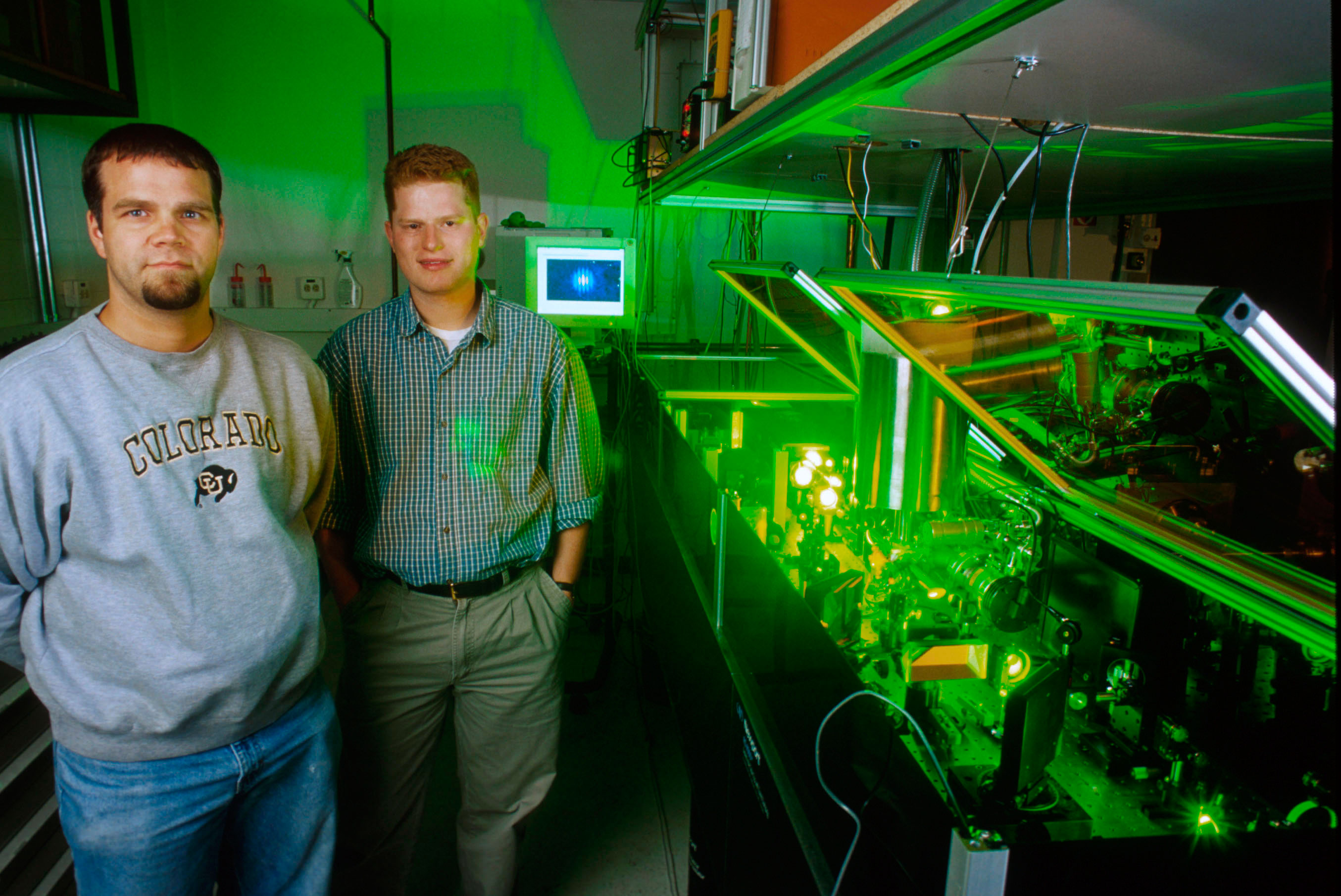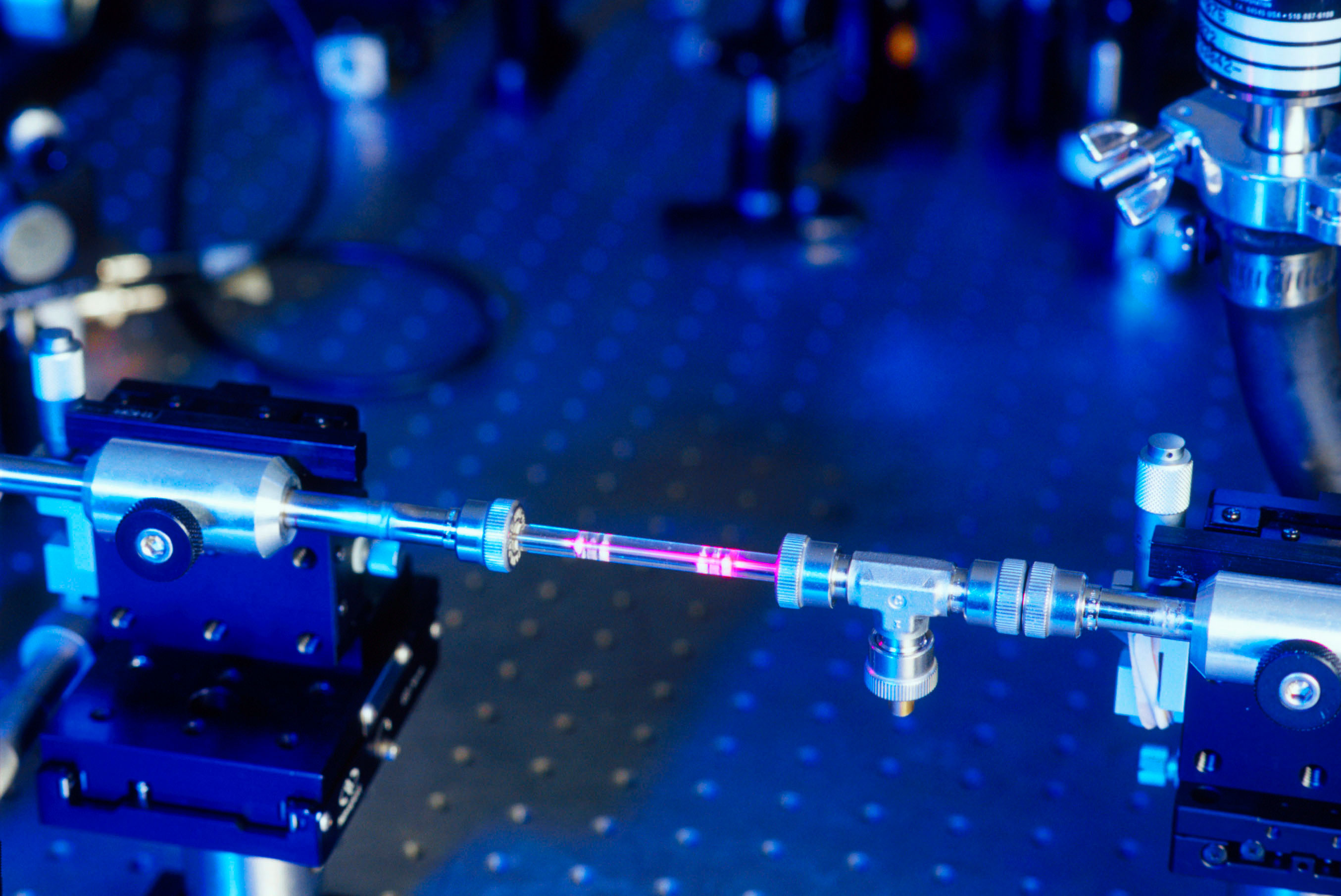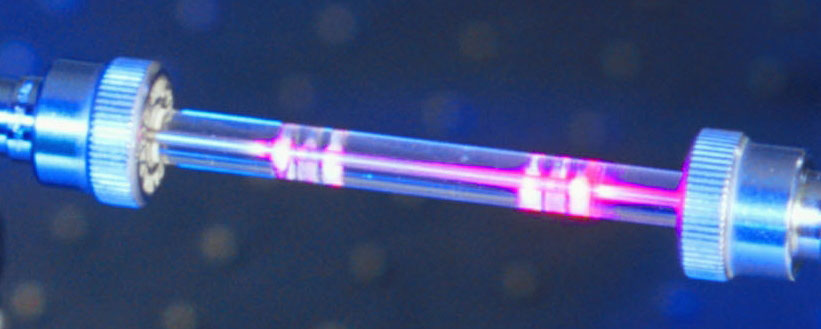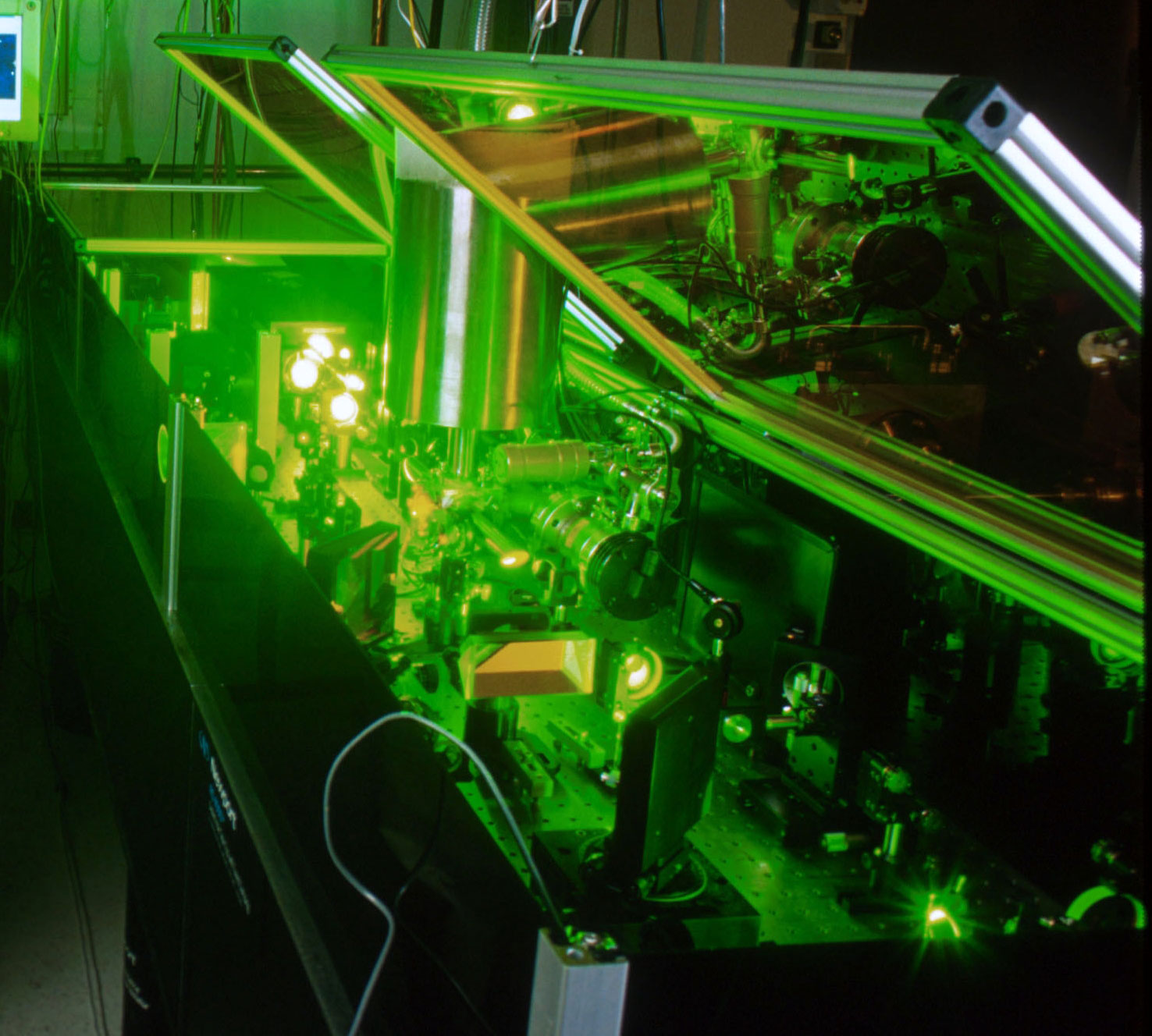|
Embargoed until 2 p.m. ET
NSF PR 03-01 - January 2, 2003
 Note About
Images
Note About
Images
Photo 1

Sterling Backus and Randy Bartels standing next to the femtosecond laser amplifier system.
Image courtesy of the University of Colorado and NSF.
Photo 2

The waveguide as it appears within the femtosecond laser amplifier system.
Image courtesy of the University of Colorado and NSF.
Photo 3

The waveguide researchers used to generate coherent EUV light. The center of the fiber is hollow, and gas flows into the fiber via tubes (the tubes were removed for the picture). The laser is focused through the hollow fiber, where it interacts with the gas to generate coherent EUV light. The modulations in the fiber are not visible in this picture.
Image courtesy of the University of Colorado and NSF.
Photo 4

This picture shows a schematic of the waveguide, the modulated hollow-core fiber used to efficiently generate shorter wavelength EUV light. The wall of the hollow fiber is modulated - wavelike, with indentations 10-micrometers (Ám) deep, periodically spaced every 0.5 mm (in the highest-intensity waveguide). The average inner diameter of the fiber is 150Ám. By modulating the diameter of the fiber, the researchers modulate the intensity of the initial laser beam, and therefore also modulate the process that produces the EUV light. The researchers adjusted the period of the wavelike modulations to restrict the EUV emission to regions where the light waves will be in phase - this is how the researchers were able to generate shorter wavelength light more efficiently than was previously possible.
Image courtesy of the University of Colorado and NSF.
Photo 5

A state-of-the-art femtosecond laser amplifier system. Although the pulse energies from this laser are modest (on the order of millijoules), and the size is relatively small, the laser system crams all of the energy into a tiny, 20 femtosecond pulse. The result is a peak power close to a terawatt (a terawatt is roughly the continuous electrical generating capacity of the United States). The amplifier system allows the researchers to generate coherent EUV beams by focusing the laser into a hollow fiber called a waveguide. The green light in the picture comes from the pump lasers that are used to amplify the femtosecond pulses to the terawatt level.
Image courtesy of the University of Colorado and NSF.
|

